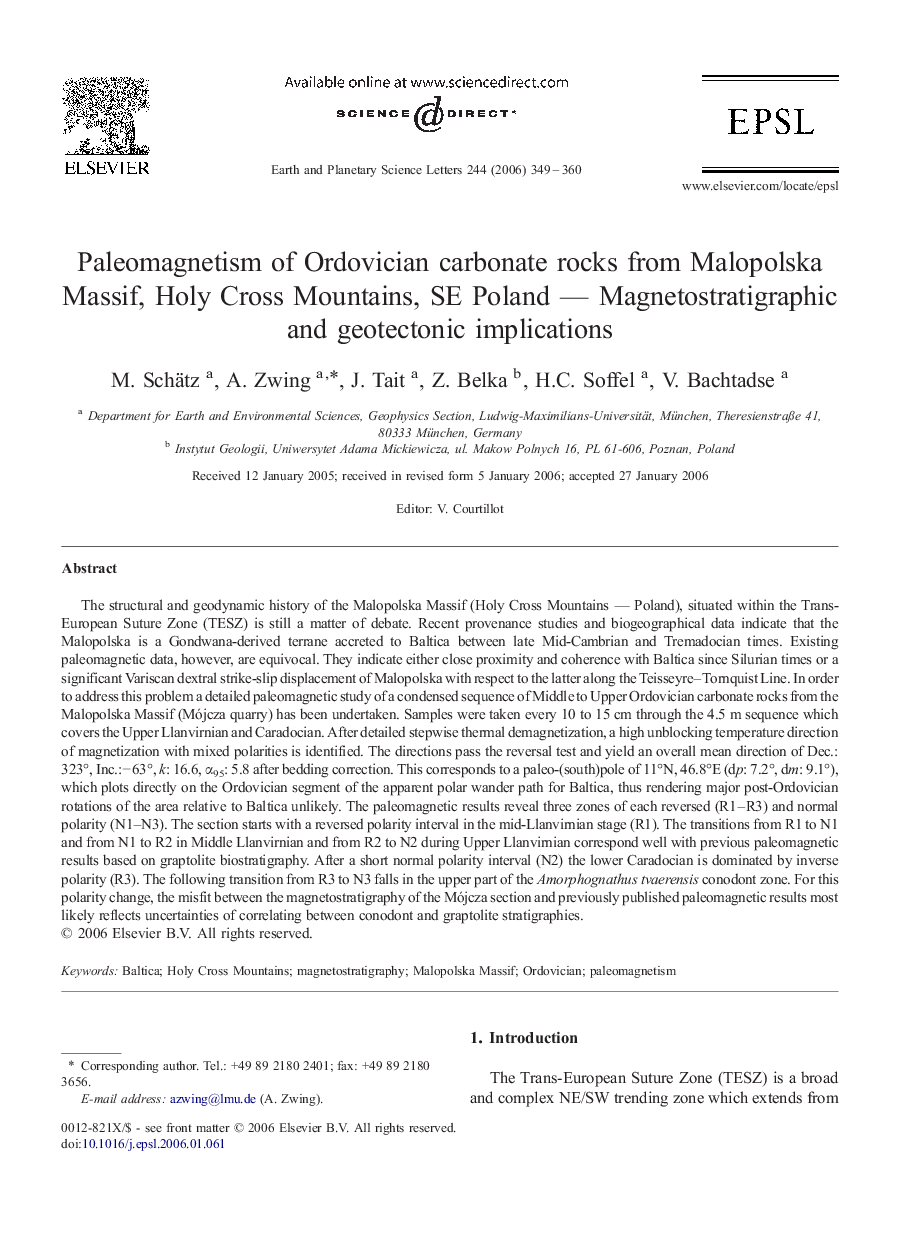| کد مقاله | کد نشریه | سال انتشار | مقاله انگلیسی | نسخه تمام متن |
|---|---|---|---|---|
| 4681074 | 1634947 | 2006 | 12 صفحه PDF | دانلود رایگان |

The structural and geodynamic history of the Malopolska Massif (Holy Cross Mountains — Poland), situated within the Trans-European Suture Zone (TESZ) is still a matter of debate. Recent provenance studies and biogeographical data indicate that the Malopolska is a Gondwana-derived terrane accreted to Baltica between late Mid-Cambrian and Tremadocian times. Existing paleomagnetic data, however, are equivocal. They indicate either close proximity and coherence with Baltica since Silurian times or a significant Variscan dextral strike-slip displacement of Malopolska with respect to the latter along the Teisseyre–Tornquist Line. In order to address this problem a detailed paleomagnetic study of a condensed sequence of Middle to Upper Ordovician carbonate rocks from the Malopolska Massif (Mójcza quarry) has been undertaken. Samples were taken every 10 to 15 cm through the 4.5 m sequence which covers the Upper Llanvirnian and Caradocian. After detailed stepwise thermal demagnetization, a high unblocking temperature direction of magnetization with mixed polarities is identified. The directions pass the reversal test and yield an overall mean direction of Dec.: 323°, Inc.:− 63°, k: 16.6, α95: 5.8 after bedding correction. This corresponds to a paleo-(south)pole of 11°N, 46.8°E (dp: 7.2°, dm: 9.1°), which plots directly on the Ordovician segment of the apparent polar wander path for Baltica, thus rendering major post-Ordovician rotations of the area relative to Baltica unlikely. The paleomagnetic results reveal three zones of each reversed (R1–R3) and normal polarity (N1–N3). The section starts with a reversed polarity interval in the mid-Llanvirnian stage (R1). The transitions from R1 to N1 and from N1 to R2 in Middle Llanvirnian and from R2 to N2 during Upper Llanvirnian correspond well with previous paleomagnetic results based on graptolite biostratigraphy. After a short normal polarity interval (N2) the lower Caradocian is dominated by inverse polarity (R3). The following transition from R3 to N3 falls in the upper part of the Amorphognathus tvaerensis conodont zone. For this polarity change, the misfit between the magnetostratigraphy of the Mójcza section and previously published paleomagnetic results most likely reflects uncertainties of correlating between conodont and graptolite stratigraphies.
Journal: Earth and Planetary Science Letters - Volume 244, Issues 1–2, 15 April 2006, Pages 349–360